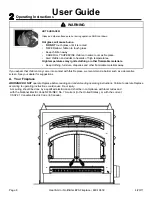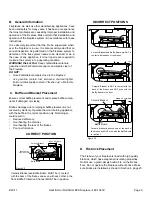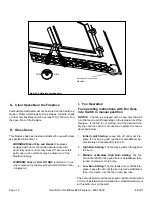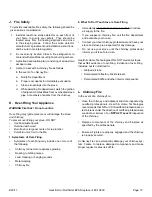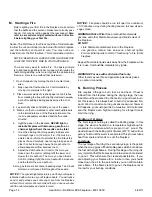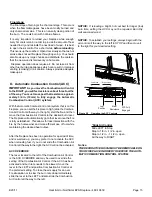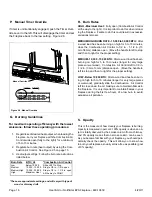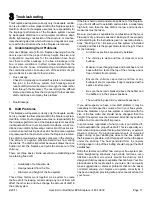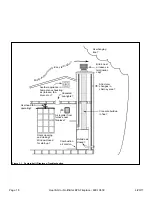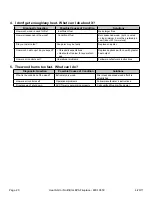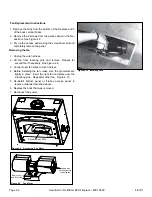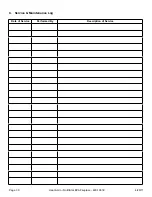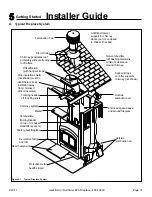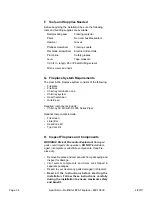
4/20/11
Heat & Glo • NorthStar EPA Fireplace • 480-1081E
Page 21
A. General Maintenance
1. Creosote (Chimney) Cleaning
• By:
Homeowner / Chimney Sweep
• Task:
See the following instructions.
Remove all ash from the firebox and extinguish all hot embers
before disposal. Allow the appliance to cool completely.
Disconnect flue pipe or remove baffle and ceramic blanket
from appliance before cleaning chimney. Otherwise residue
can pile up on top of the baffle and ceramic blanket and the
appliance will not work properly. (See Baffle Removal on
page 25). Close the door tightly. The creosote or soot should
be removed with a brush specifically designed for the type
of chimney in use. Clean out fallen ashes from the firebox. A
chimney sweep can perform this service.
It is also recommended that before each heating season
the entire system be professionally inspected, cleaned and
repaired if necessary.
Chimney
Remove 4 screws
and lift top pan off.
Cap
Slip
Section
ST375
Square
Termination Cap
Cap
Remove screws,
lift top cover.
Top Cover
TR344/TR342
Round
Termination Cap
Chase
Cap
1. Remove the 4 screws.
2. Remove the screen.
3. Remove the baffle.
TS345/TS345P
Square
Termination Caps
TCT375
Terra Cotta
Termination Cap
Remove 2 screws from
the front and back and
lift the top off.
4
Maintenance & Servicing the Fireplace
Inspection:
Inspect the system at the appliance connection
and at the chimney top. Cooler surfaces tend to build
creosote deposits quicker, so it is important to check the
chimney from the top as well as from the bottom.
Figure 4.1 Chimney & Termination Cap Cleaning
Formation and Need For Removal
: When wood is burned
slowly, it produces tar and other organic vapors which combine
with expelled moisture to form creosote. The creosote vapors
condense in the relatively cool chimney flue of a newly-
started or a slow-burning fire. As a result, creosote residue
accumulates on the flue lining. When ignited, this creosote
creates an extremely hot fire which may damage the chimney
or even destroy the house. The chimney connector and
chimney should be inspected once every 2 months during the
heating season to determine if a creosote or soot buildup has
occurred. If creosote or soot has accumulated, it should be
removed to reduce the risk of a chimney fire.
• Frequency:
As necessary; at least annually before
lighting stove or once every 2 months
during heating season.
WARNING! Risk of Fire! Ignited creosote is extremely
HOT. Prevent creosote buildup.
In the event of a chimney fire, Hearth & Home Technolo-
gies Inc. recommends
• replacement of the chimney, and
• inspection of the adjacent structure to the provisions of
NFPA Level III inspection criteria.


